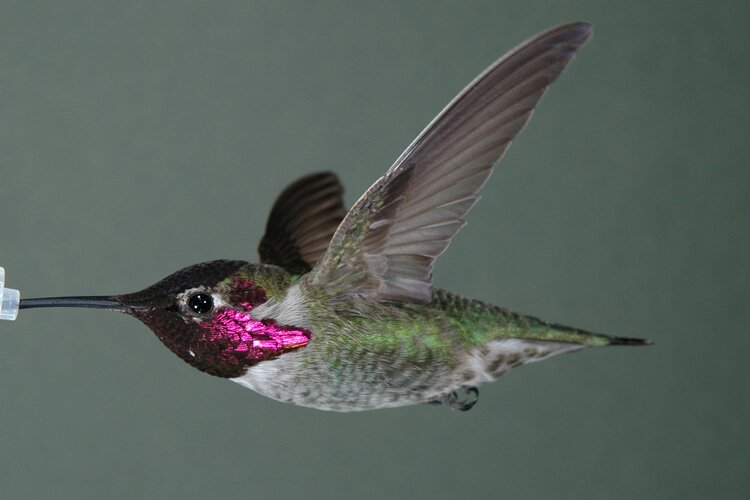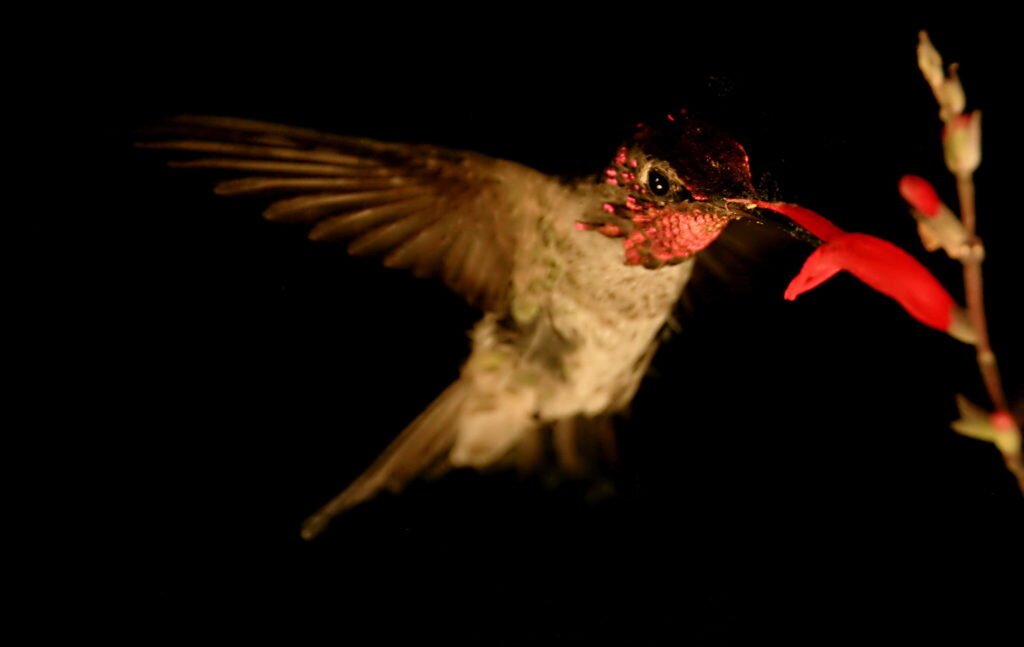The presence of alcohol in hummingbird feeders and nectar-filled flowers creates a natural experiment in fermentation. Yeast and bacteria metabolize some of the sugar in these sources, converting it into alcohol. This raises intriguing questions for biologist Robert Dudley from the University of California, Berkeley. How much alcohol do hummingbirds consume in their daily foraging? Are they attracted to or repelled by alcohol? Is ethanol an inevitable part of the diet of hummingbirds and other animals, considering that it is a natural byproduct of sugary nectar?
Dudley, a professor of integrative biology at UC Berkeley, highlights that hummingbirds consume about 80% of their body mass in nectar daily. While most of it is water and sugar, even low concentrations of ethanol could result in a high dosage due to the large volume of nectar consumed. This led Dudley to wonder if hummingbird feeders not only attract these birds but also serve as “bars” providing them with ethanol.
During the height of the COVID-19 pandemic, when studying wild hummingbirds became challenging, Dudley assigned several undergraduate students to conduct experiments on the Anna’s hummingbirds (Calypte anna) visiting the feeder outside his office window. The goal was to determine whether alcohol in sugar water was appealing or off-putting to the birds. The results of this study, published in the journal Royal Society Open Science, revealed that hummingbirds happily drank sugar water containing up to 1% alcohol by volume, finding it just as attractive as plain sugar water.
However, the hummingbirds showed moderation in their consumption when the sugar water contained 2% alcohol. They drank only half as much as they did with plain sugar water. This indicated a threshold effect, suggesting that the alcohol content in natural sources is unlikely to exceed 1.5%.
‘They’re not getting drunk’
In their experiments, Dudley and his team also tested the alcohol level in sugar water that had been sitting in the feeder for two weeks. They discovered a much lower concentration, approximately 0.05% by volume.
Dudley acknowledges that 0.05% may not sound like a significant amount, but considering that hummingbirds consume around 80% of their body weight in nectar daily, even this concentration results in a substantial ethanol load relative to their body mass. This finding supports the notion that hummingbirds are naturally exposed to physiologically significant levels of ethanol through their diet.
However, Dudley emphasizes that hummingbirds quickly metabolize and burn off the alcohol and sugars, preventing any noticeable effects. They do not become intoxicated from consuming these levels of ethanol.
In conclusion, the study suggests that while hummingbirds are exposed to ethanol through their consumption of nectar and sugar water, their rapid metabolism prevents any intoxication or negative effects.

Dudley and his colleagues, herpetologist Jim McGuire and bird expert Rauri Bowie, are engaged in a long-term project at UC Berkeley’s Museum of Vertebrate Zoology. Their aim is to investigate the role of alcohol in animal diets, particularly in tropical regions where fruits and nectar readily ferment, leading to alcohol consumption by fruit-eating and nectar-sipping animals.
The researchers are interested in understanding the behavioral effects of alcohol on animals. Does it stimulate feeding at low levels? Does it influence the frequency of flower visitation by providing both sugar and ethanol? These questions can be addressed experimentally.
As part of their project, the team is conducting alcohol content tests on fruits in Africa and nectar in flowers at the UC Botanical Garden. Currently, there is a lack of systematic studies on the alcohol content of fruits and nectar, as well as alcohol consumption by nectar-sipping birds, insects, mammals, and fruit-eating animals, including primates.
However, a few individual studies have provided suggestive evidence. For example, a 2008 study found high alcohol levels, up to 3.8% by volume, in the nectar of palm flowers consumed by pen-tailed tree shrews in West Malaysia. Another study in 2015 revealed relatively high alcohol concentrations in the nectar consumed by slow lorises, a primate species. Slow lorises and aye-ayes, another primate, showed a preference for nectar with higher alcohol content.
The recent study by Dudley and his team demonstrates that birds, including hummingbirds, are also likely consuming alcohol through natural fermentation processes.
To further their research, the team plans to measure the natural ethanol content in flowers and determine the frequency of alcohol consumption by birds. Dudley intends to expand the study to include Old World sunbirds and honeyeaters in Australia, which occupy the same nectar-sipping niche as hummingbirds in America.
Dudley has had a long-standing interest in alcohol use and its impact. In his 2014 book, “The Drunken Monkey: Why we drink and abuse alcohol,” he presents evidence suggesting that humans’ attraction to alcohol is an evolutionary adaptation for survival among primates. He believes that studying the comparative biology of ethanol consumption in animals can provide insights into patterns of alcohol consumption and abuse in humans.
The paper’s co-authors include McGuire, Bowie, former undergraduates Julia Choi and Lilianne Lee, graduate student Aleksey Maro, and postdoctoral researcher Ammon Corl, all from UC Berkeley.
Source: University of California - Berkeley
